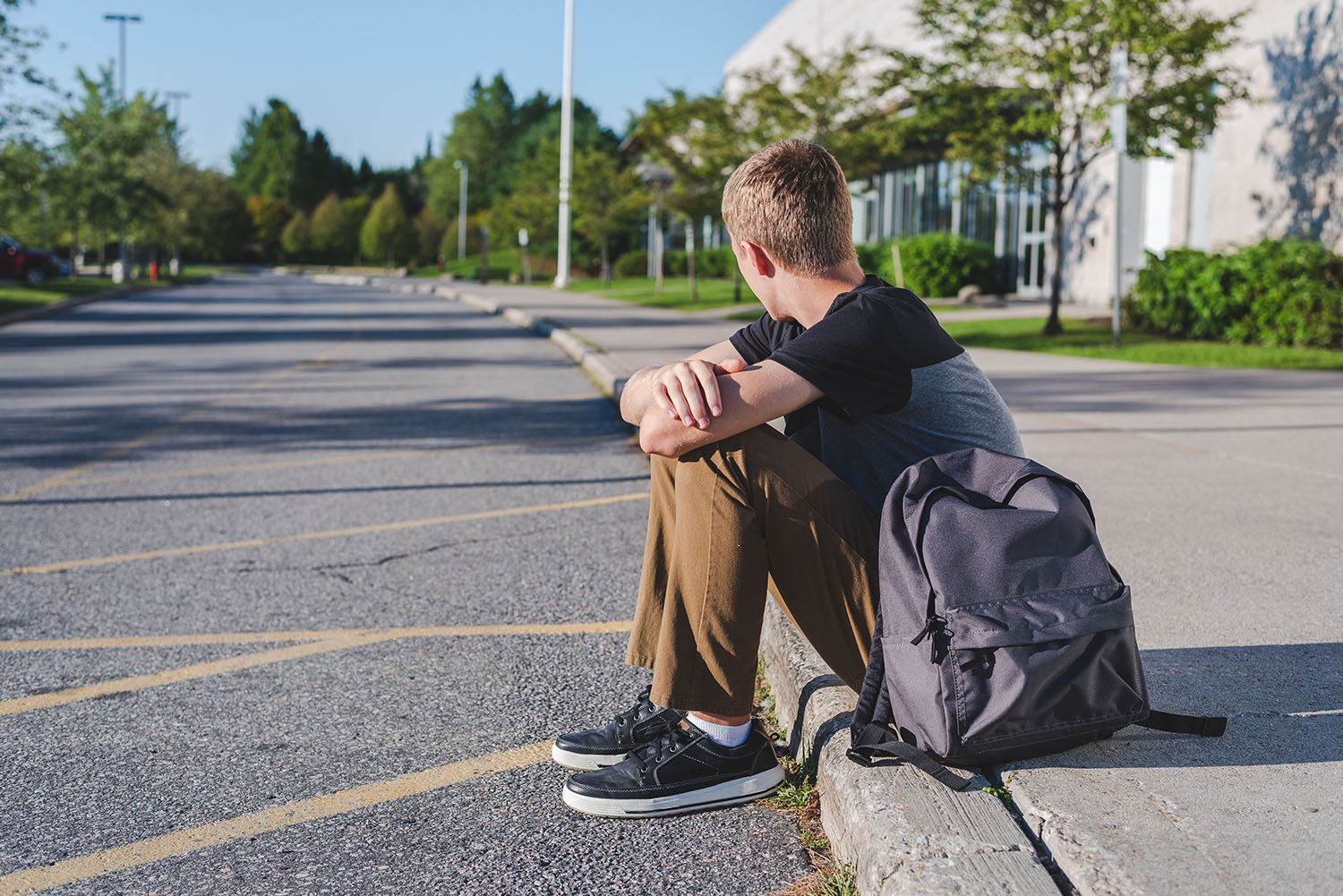November 2019
Homelessness Comes to School
November 7, 2019
Nearly 1.3 million schoolchildren in the United States do not have stable housing. This number has increased by 70 percent over the last ten years. And although there’s been a federal law in place since 1987 – the McKinney-Vento Homeless Assistance Act – that lays out the responsibilities of schools and educators to protect these students, many educators have not heard of it. Here’s what you need to know.
 Federal law requires schools to make efforts to identify and serve students experiencing
homelessness.
Federal law requires schools to make efforts to identify and serve students experiencing
homelessness.Administrators
Federal law requires schools to make efforts to identify and serve students experiencing homelessness. Know the federal definition: a student is eligible for services if s/he is living in an emergency shelter, in any place not intended for human habitation (like a car, a park, or a motel), or “doubled up,” which is when two or more families share a living space only intended for one family. Students who are homeless are entitled to immediate enrollment in school even without documentation, transportation, access to the free lunch program, and school choice (parents can choose whether to keep their children in the school they attended when they last had housing, or to move to a school closer to their temporary shelter). Make teachers, counselors, and front office staff, who are often in the position to determine a child’s housing status, aware of the many webinars that can help them understand and serve this population.
Examine your own knowledge and biases about homelessness. Do you believe homeless families are somehow to blame for their own circumstances?
Teachers and counselors
Homelessness is hard on children and families. Homeless children are more susceptible to hunger, malnutrition, and illness than stably-housed children. Preschool children without housing have lower visual-motor skills and more behavioral issues than housed children. As children reach elementary age, they also have more absences and school mobility (changes in school), which can lead to social isolation, lower grades, and more mental health issues. Teachers can combat these challenges by following research-based recommendations:
Examine your own knowledge and biases about homelessness.
Do you believe homeless families are somehow to blame for their own circumstances? Read about the affordable housing crisis and employment rates among homeless families. Visit your local family shelter. Work to cultivate respect and care for homeless children and their families. Help your co-workers do the same.
Check out webinars and other electronic resources. Did you know that Sesame Street has a homeless character?
 Promote acceptance and belonging.
Promote acceptance and belonging.Adding books about homelessness in your classroom library and viewing relevant television shows are great ways to build inclusiveness.
Promote acceptance and social belonging in the classroom.
While all children thrive when they feel cared about at school, homeless youth are particularly affected.
- Put books about homelessness in your classroom library. For younger children, try Eve Bunting’s Fly Away Home and Monica Gunning’s A Shelter in Our Car. For older elementary and middle schoolers, Katherine Applegate’s Crenshaw is sensitive and thought-provoking. There are dozens of young adult novels about this topic.
- Look for relevant children’s TV shows – in addition to Sesame Street, there’s a Reading Rainbow episode on homelessness (available on Amazon Prime).
Build meaningful relationships with parents.
Many homeless parents never completed formal education and fear you’re judging them. Reach out, but have reasonable expectations – these parents might not be able to come to school for conferences. Maybe you could talk on the phone, email, or use a text-based app to keep lines of communication open. Remind yourself that all parents care about their children’s education.
Understand that students experiencing homelessness have likely changed schools more than most, and they will have gaps in academic preparation.
- Use a strengths-based approach – what can they do, and how can you build bridges from that to where they need to go?
- Offer tutoring and flexible assignments. Many homeless youth lack the resources to complete homework the way their peers can.
- Let homeless students build a portfolio of their work as they master tasks – that way, if they have to change schools again without notice, their new teachers can quickly see what they have already accomplished.
 One in ten youth between the ages of 13 and 25 experience homelessness every year.
One in ten youth between the ages of 13 and 25 experience homelessness every year.Don’t forget about older youth.
One in ten youth between the ages of 13 and 25 experience homelessness every year. These youth often run away from abusive households or are kicked out of the home because they identify as LGBTQ. Likewise, pregnancy is a common reason teens are kicked out of their homes. Teens who experience homelessness have lower grades and higher rates of depression and anxiety than their peers, and are more likely to engage in risky behaviors. Even since the Every Student Succeeds Act of 2015 increased funding for these students, one third of youth experiencing homelessness will not graduate from high school.
Although the challenges of educating children without homes can seem daunting, these children also exhibit resilience that can be fostered by educators. With the proper approaches, homeless children can thrive in school.
Written by:
Kerri Tobin, PhD | Associate Professor, LSU School of Education
Dr. Tobin is a researcher who focuses the effects of poverty on all facets of a child’s education, with particular interest in the intersections of race and class as they play out in classrooms and schools. Knowing that research shows poverty impacts which school a child attends, what his teachers expect of him, and what he will ultimately go on to achieve, she helps new and pre-service teachers recognize and understand their tremendous responsibilities in the classroom.
Dr. Tobin started her teaching career in the poorest Congressional district in the United States, and the grace of the children and teachers she encountered in classrooms there prompted her to spend a decade mentoring new teachers in high-needs schools across New York City, Philadelphia, and Nashville. She uses the foundational social work values and ideals she learned in her MSW program to guide students in developing empowering, student-centered classroom practices.
While studying with Dr. Joseph Murphy at Vanderbilt University, Dr. Tobin developed her specific focus on children experiencing homelessness; they co-authored the book Homelessness Comes to School (Corwin Press) in 2012. Dr. Tobin has since written, published, taught, and delivered professional development for teachers on the needs and experiences of this vulnerable population. Her dissertation, Identifying Best Practices for Homeless Students, received the Dissertation of the Year award from the American Educational Research Association’s Leadership for School Improvement SIG in 2012.
Contact Us:
LSU School of Education | 225-578-6867 | Our Faculty & Staff